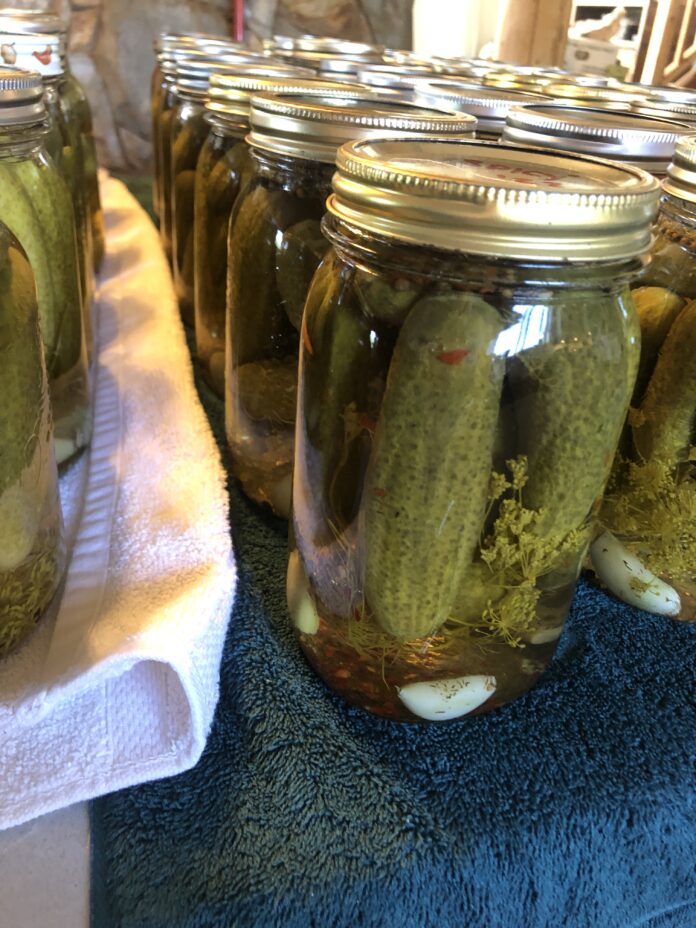The Cascade Kitchen is a student-run food column that brings you budget-friendly recipes and cooking tips. If you want to see your own recipe featured next, get started by reaching out to culture@ufvcascade.ca.
This year I decided to take the plunge and pickle, can, and preserve an excessive amount of food for the winter. Grocery prices are killing my wallet and so I spent last weekend canning 50 jars of pickles. Truly, there is nothing more satisfying than seeing them all set out on my table, ready to be eaten. I grew up watching my mother and grandmother take on the task and despite how time-consuming it can be, it was relatively easy! It’s important to review the current canning guidelines for your elevation before you begin. It’s canning season, baby. Let’s make some pickles.
Time: 1 hour
Makes: 6 quarts
Jar Ingredients:
- 6 lbs pickling cucumbers (these are different than regular, English cucumbers)
- 12 garlic cloves, peeled
- A handful of flowering pickling dill (regular dill will work fine, too)
- Seasonings of choice (I like red pepper flakes, peppercorns, bay leaves, and mustard seeds)
Brine Ingredients:
- 8 cups water
- 6 cups distilled white vinegar (5 percent acidity)
- 1/3 cup granulated sugar
- 6 Tbsp pickling salt
Method:
- Sterilize your jars by washing them thoroughly and then placing them in a hot water bath, allowing them to simmer for 10 minutes. Remove jars when done and place them on a towel-lined surface.
- Combine all of the brine ingredients in another pot and bring to a boil. Once boiling, lower to a simmer.
- While your brine is simmering, pack your sterilized jars with garlic, dill, and any other seasonings you prefer.
- Pack 6-8 washed cucumbers (depending on size) into the jars, ensuring that you are leaving a couple of inches of headspace.
- Once packed, carefully pour the hot brine over your prepared jars. Leave approximately ½ inch headspace.
- Wipe the rim of the jar with a clean towel dipped in white vinegar to ensure that your jars are clean and will seal properly. Then screw on your lid.
- Place the jars back in the water bath, and keep two inches of water above the jars. Return to a boil and start your timer and let them sit in the water for 10 minutes. If for some reason your water stops boiling, start the timer once it returns to a boil.
- Carefully remove them and place them on a towel-lined surface and rest for 24 hours.
- If you hear a ‘pop,’ or see the indentation on the top of the lid sit flat, they have sealed properly and are safe to eat!
Sydney is a BA English major, creative writing student, who has been a content contributor for The Cascade and is now the Opinion editor. In 7th grade, she won $100 in a writing contest but hasn’t made an earning from writing since. In the meantime, she is hoping that her half-written novels will write themselves, be published, and help pay the bills.


